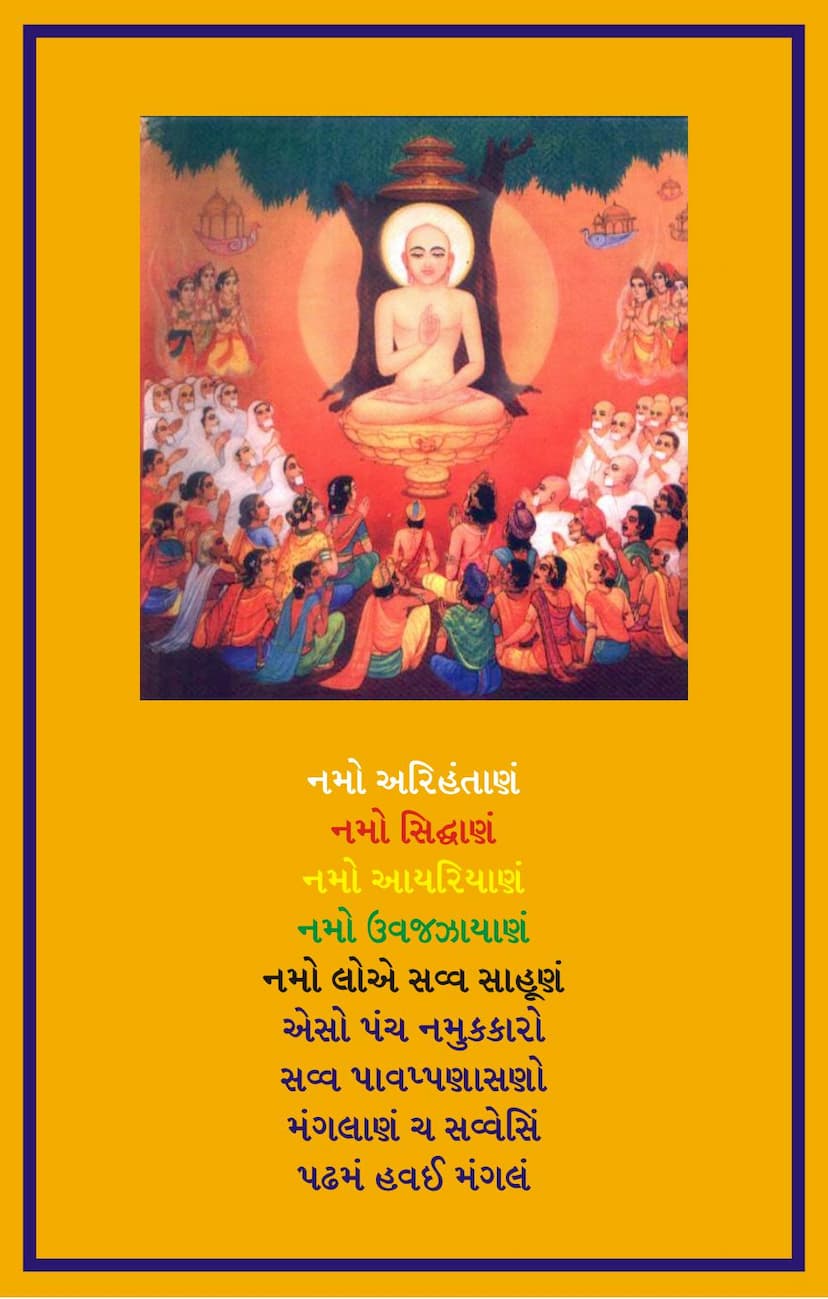Agam 08 Ang 08 Antkrut Dashang Sutra Sthanakvasi Gujarati
Added to library: September 1, 2025
Loading image...

Summary
This document is the Gujarati edition of the "Antkrut Dashang Sutra" (अन्तकृत दसांग सूत्र), an important Jain scripture. The title translates to "The Sutra of Ten Types of Those Who Have Reached Their End," referring to individuals who attained liberation (moksha) in their final life. The text is presented with a commentary called "Muni Kumud Chandrika" (मुनि कुमुदचन्द्रिका) by Acharya Ghanshilal Maharaj (घांसीलाल महाराज) and is published by the A.B. Shwetambar Sthanakvasi Jain Shastroddhar Samiti.
Key elements and structure:
- Invocation (Mangalacharan): The text begins with the traditional Jain invocation "Namo Arihantanam" and other sacred phrases.
- Introduction: It mentions the dedication to Acharya Ghanshilalji Maharaj and the organization responsible for its publication. The catalog link provided points to its availability on jainqq.org.
- Content and Structure: The book is divided into eight vargas (sections or classes), each containing several adhyayan (chapters or studies). The Antkrut Dashang Sutra narrates the life stories and spiritual journeys of eminent Jain monks who achieved liberation.
- First Vargas (1-4): These sections focus on the lives and spiritual attainments of prominent figures, including Gautam Swami, various princes and princes, and warriors like Krishna Vasudev. Their rebirths, penances, and ultimate liberation are detailed.
- Fifth Vargas: This section details the stories of ten queens who achieved liberation.
- Sixth Vargas: This section includes the narratives of sixteen individuals who attained liberation, including merchants and ascetics. The lives of Arjuna Mali and his transformation are particularly highlighted.
- Seventh Vargas: This section describes the lives of thirteen queens of King Shrenik.
- Eighth Vargas: This section recounts the lives of ten women, including Kali, Sukali, Mahakali, Krishna, Sukrishna, Mahakrishn, Veerkrishna, Ramkrishna, Pitrusenkrishna, and Mahasenkrishna, all of whom attained liberation through rigorous ascetic practices.
- Rules for Study (Swadhyay): The text provides specific guidelines for the study of the scripture. These include:
- Recommended times for study (day and night's first and fourth quarters).
- Prohibited times for study (dawn, dusk, midday, midnight).
- Restrictions for women during menstruation.
- A detailed list of 32 aswadhyaya (times when study is prohibited) related to celestial phenomena (like meteors, lightning), environmental conditions (like fog, dust), and bodily impurities or events (like blood, excreta, cremation grounds, eclipses, royal turmoil, death of important figures, dead bodies).
- Commentary and Translation: The commentary by Acharya Ghanshilal Maharaj and the Hindi-Gujarati translation aim to make the scripture accessible to a wider audience. The detailed table of contents (विषय) on pages 11-15 outlines the various individuals and events covered in the text.
- Key Themes: The scripture emphasizes the importance of renunciation (vairagya), asceticism (tapasya), self-discipline (samyama), and the pursuit of liberation (moksha). It illustrates that liberation can be attained by individuals from all walks of life, including princes, merchants, warriors, and women, through dedicated spiritual practice and adherence to Jain principles. The narrative often involves overcoming desires, attachments, and the consequences of past karma.
- Significance: The Antkrut Dashang Sutra serves as an inspirational guide for spiritual aspirants, providing detailed accounts of individuals who successfully navigated the path to liberation, offering lessons on virtue, perseverance, and the ultimate triumph of the soul.